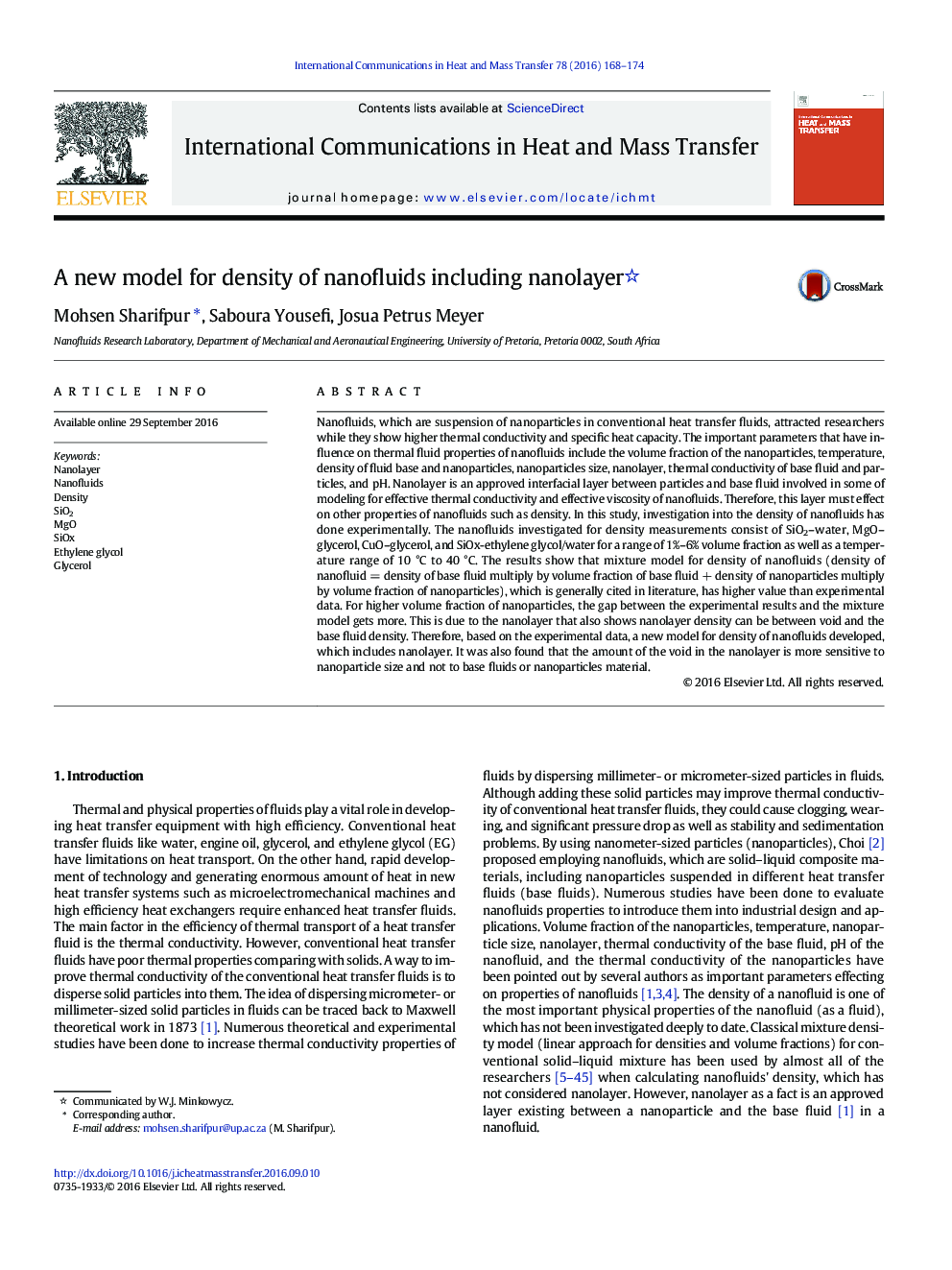| کد مقاله | کد نشریه | سال انتشار | مقاله انگلیسی | نسخه تمام متن |
|---|---|---|---|---|
| 4993080 | 1457476 | 2016 | 7 صفحه PDF | دانلود رایگان |
عنوان انگلیسی مقاله ISI
A new model for density of nanofluids including nanolayer
ترجمه فارسی عنوان
یک مدل جدید برای تراکم نانوسیمهای از جمله نانولوله
دانلود مقاله + سفارش ترجمه
دانلود مقاله ISI انگلیسی
رایگان برای ایرانیان
کلمات کلیدی
موضوعات مرتبط
مهندسی و علوم پایه
مهندسی شیمی
جریان سیال و فرایندهای انتقال
چکیده انگلیسی
Nanofluids, which are suspension of nanoparticles in conventional heat transfer fluids, attracted researchers while they show higher thermal conductivity and specific heat capacity. The important parameters that have influence on thermal fluid properties of nanofluids include the volume fraction of the nanoparticles, temperature, density of fluid base and nanoparticles, nanoparticles size, nanolayer, thermal conductivity of base fluid and particles, and pH. Nanolayer is an approved interfacial layer between particles and base fluid involved in some of modeling for effective thermal conductivity and effective viscosity of nanofluids. Therefore, this layer must effect on other properties of nanofluids such as density. In this study, investigation into the density of nanofluids has done experimentally. The nanofluids investigated for density measurements consist of SiO2-water, MgO-glycerol, CuO-glycerol, and SiOx-ethylene glycol/water for a range of 1%-6% volume fraction as well as a temperature range of 10 °C to 40 °C. The results show that mixture model for density of nanofluids (density of nanofluid = density of base fluid multiply by volume fraction of base fluid + density of nanoparticles multiply by volume fraction of nanoparticles), which is generally cited in literature, has higher value than experimental data. For higher volume fraction of nanoparticles, the gap between the experimental results and the mixture model gets more. This is due to the nanolayer that also shows nanolayer density can be between void and the base fluid density. Therefore, based on the experimental data, a new model for density of nanofluids developed, which includes nanolayer. It was also found that the amount of the void in the nanolayer is more sensitive to nanoparticle size and not to base fluids or nanoparticles material.
ناشر
Database: Elsevier - ScienceDirect (ساینس دایرکت)
Journal: International Communications in Heat and Mass Transfer - Volume 78, November 2016, Pages 168-174
Journal: International Communications in Heat and Mass Transfer - Volume 78, November 2016, Pages 168-174
نویسندگان
Mohsen Sharifpur, Saboura Yousefi, Josua Petrus Meyer,
